Inbox and environment News: issue 367
July 8 - 21, 2018: Issue 367
Seal Of Approval
Remember this video? - it's still wonderful a few years on.
We have a few resident seals in and around Pittwater - one is seen regularly on the rocks at Barrenjoey headland just as you come back into the estuary - others, smaller and fishing for food, have been filmed in the estuary itself, while we have seals as visitors too. These wonderful creatures are a great reminder that we share our home with all kinds of other creatures, furred, feathered, scaled - of the sea, the air and land - this is their home too.
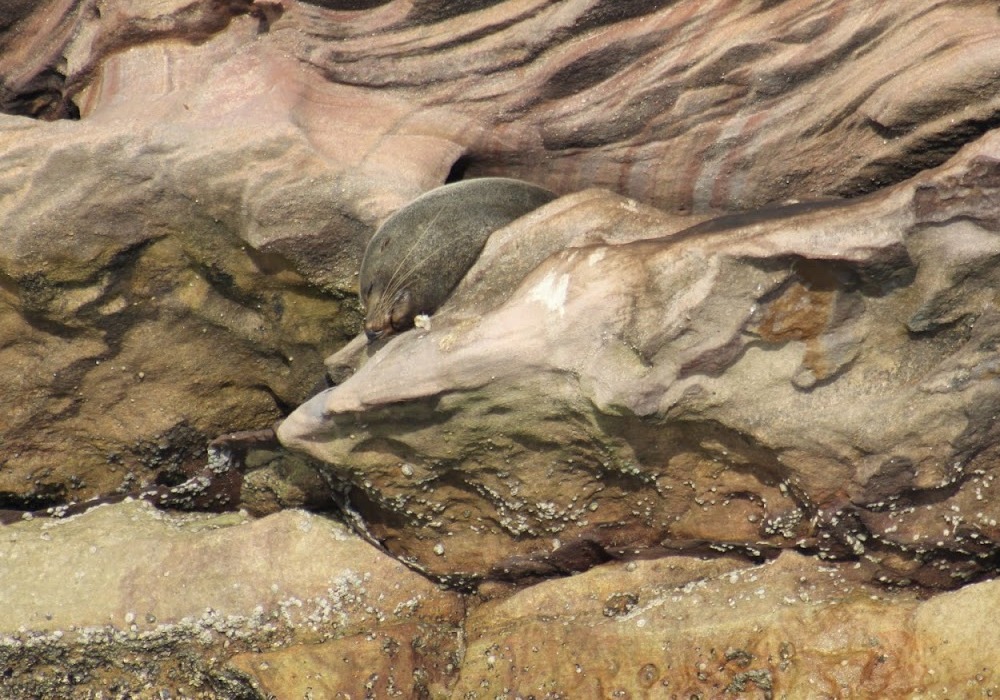
The Barrenjoey Seal - A J Guesdon Picture
If we want to keep encountering them in the creeks or on the playing fields, or on the beaches or atop the hills of Pittwater, we must be respectful of their place in our environment and be respectful of their places (where they live).
Hope all our students have a truly spectacular Winter Break and allow yourselves a few moments or hours to get out there and enjoy where we live - that's when you open a door to something memorable happening, whether shared with friends or given just to you to keep forever during some just for you moment.
We live in one of the best places in the world - let's revel in it!

Mining Industry Gets More Protection Than Sydney’s Drinking Water Catchment
July 2nd, 2018: Media release - Lock the GateLock the Gate Alliance says an Audit Office investigation into the regulation of pollution in drinking water catchments exposes the appalling consequences of the NSW Government decision last year to change the law to allow pollution by coal mines to continue.
After a successful court case brought by community group 4Nature against the discharge of polluted water from the Springvale coal mine into the catchment of the Warragamba Dam, the NSW Government last year changed the law to allow the pollution to continue unchecked.
This Audit Office report released last week reveals that the NSW Government has failed to investigate the cause of worsening salinity in Lake Burragorang, despite a recommendation twelve months ago that it needed to be done.
In contrast, the NSW Government acted very quickly to protect mining industry interests, despite a successful court case against them polluting the catchment.
Lock the Gate Alliance spokesperson Georgina Woods said, “The people of New South Wales are seeing their water polluted while mining companies lean on Governments to wind back environmental protections.
“Springvale coal mine has been discharging polluted water into tributaries of Warragamba Dam for years, and when a community group stepped in to stop it, the NSW Government moved to protect the mining industry, not the catchment.
“The polluted water comes from the coal seams that are targeted for mining, and it is highly saline and contains heavy metals.
“Now the NSW Government is considering new and highly damaging coal mine expansion projects at Russell Vale, the Southern Highlands and Dendrobium.
“It’s time for all of this to stop. The EPA and the Government must order Springvale mine to stop discharging pollution into the Coxs River and the Government must impose a moratorium on any further coal mining in the catchment area.
“Allowing coal mines to pollute our catchment is doing real damage to Sydney’s drinking water. It’s time to choose clean safe drinking water.”
Piping Plovers Want People To Get Off Their Lawn
July 4th, 2018: American Ornithological Society Publications OfficeA new study in The Condor: Ornithological Applications presents negative associations between anthropogenic disturbance (human recreational use of beaches, coastal modifications) and Piping Plovers on their non-breeding grounds. Shorebirds are one of the most threatened bird families in the world. Numerous studies have shown the negative impacts of humans on these birds, whether it be large-scale (e.g., habitat loss, climate change) or small-scale (e.g., ATV use, running with pets, flying kites).This research indicates that there are direct consequences of disturbance. Most Piping Plover research has focused on the breeding season in an attempt to directly influence population numbers, however this study argues that efforts are required throughout the year in all locations to assist Piping Plover conservation.
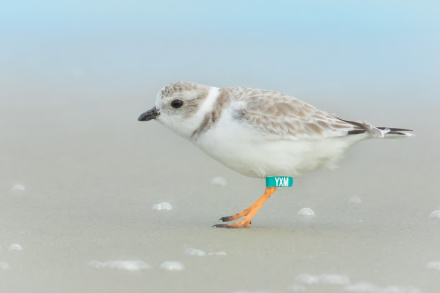
Banded Piping Plover in non-breeding plumage (Photo Credit: Kelley Luikey)
Virginia Polytechnic Institute and State University’s Dan Gibson and colleagues monitored Piping Plovers year-round to determine the health and behavior of individuals. Body condition, survival, and site fidelity were of most interest. Plovers in disturbed areas proved to be significantly lighter in mass, due to the birds not procuring enough food. Given poorer body condition, it should be no surprise that birds in these disturbed areas also had lower survival rates. Piping plovers have strong site fidelity on the breeding grounds and this study supports that fidelity continues on the non-breeding grounds. While physically capable of changing location, it was not common for individuals to do so even if there was a high level of disturbance. The lack of movement by disturbed individuals suggests that aspects of the species’ life history (i.e. fidelity) constrained individuals to make seemingly adaptive habitat-use decisions. Some of the strategies used on the breeding grounds (reduced human recreation, roped-off areas, no dogs on beaches) may be beneficial to also do on the non-breeding grounds to ensure year-round conservation and oversight on this threatened shorebird species.
Lead author Dan Gibson comments, “We have a lot of of opportunity to engage with the public in what exactly our research is about. We often try to stress that the impact an individual recreationist has on a shorebird is practically non-existent. However, if every person who uses a beach in a given day influences how these shorebirds feed or rest, those minute impacts can begin to add up over the course of a season that can manifest itself as reductions in individual body condition and ultimately their ability to withstand bad weather conditions or successfully migrate and find a mate. We try to stress that small changes in how we use a beach (e.g., keep dogs on leash, avoid running through groups of birds) can really add up to substantial improvements in the overall quality of coastal habitat for shorebirds.”
“This study availed itself of a unique resource that range-wide banding efforts have provided for the study of the demographics of the endangered piping plover,” adds College of Environmental Science and Forestry Associate Professor Jonathan Cohen, a shorebird expert who was not involved with the research, “and successfully attempted the difficult task of teasing out the sometimes subtle effect of disturbance in nonbreeding areas on annual vital rates. The finding that this endangered species may not readily abandon habitat that is detrimental for fitness was surprising, and warrants immediate attention from the conservation community.”
Daniel Gibson, Melissa K. Chaplin, Kelsi L. Hunt, Meryl J. Friedrich, Chelsea E. Weithman, Lindsay M. Addison, Vincent Cavalieri, Scott Coleman, Francesca J. Cuthbert, James D. Fraser, Walker Golder, Doug Hoffman, Sarah M. Karpanty, Alice Van Zoeren, Daniel H. Catlin.Impacts of anthropogenic disturbance on body condition, survival, and site fidelity of nonbreeding Piping Plovers. The Condor, 2018; 120 (3): 566 DOI: 10.1650/CONDOR-17-148.1
About the journal: The Condor: Ornithological Applications is a peer-reviewed, international journal of ornithology published by the American Ornithological Society. The journal began in 1899, and in 2016 The Condor had the number one impact factor among 24 ornithology journals.

New Open-Cut Mine Upwind Of Muswellbrook Will Worsen Air Quality: Critics Say Health And Environmental Impacts Have Been Ignored
July 4th, 2018: Media release - Lock the GateCritics of a proposal to extend the life of the new Mount Pleasant open-cut coal mine Mount Pleasant on the outskirts of Muswellbrook say concerns about the cumulative health and environmental impact of the mine with other large open cuts in the area have been ignored by the Department of Planning and they are calling on the Independent Planning Commission to demonstrate its independence by refusing to approve the extension.
The Independent Planning Commission is today holding a public meeting in Muswellbrook to hear views about a proposal to extend the life of the project beyond 2020. The mine was approved in 1999 but has only recently begun construction. It’s approval to mine cuts out in 2020, so a modification is needed for it to proceed.
Around 20 people will address the meeting, including Steve Phillips of Lock the Gate Alliance and Wendy Wales of Denman Aberdeen Muswellbrook Scone Healthy Environment Group.
Ms Wales said, “A large new open cut mine is anything but ‘pleasant.’ Air quality is terrible in and around Muswellbrook and this mine upwind of the prevailing nor-west winds is going to make it a lot worse.
“Mount Pleasant is a significant change for us. We have not have any mines north-west of town until now and that is why we haven’t had the extremes and dust alerts that Camberwell and north west Singleton have had.
“It doesn’t feel as if the NSW Government cares at all about air pollution and its effect on us, so we are appealing to the Planning Commission to demonstrate its independence and refuse to approve this modification.”
Steve Phillips said, “When this mine was approved 20 years ago, there was far less mining activity in close proximity to town. Now it is being surrounded by open cut mines. Every time the wind blows, this mine will blanket Muswellbrook in dust.
“If this mine proceeds, and the expansion of Bengalla, then the area immediately to the west and south of Muswellbrook is going to be a long string of open cut pits.”
Piscatory Paradox: Frigid Polar Oceans, Not Balmy Coral Reefs, Are Species-Formation Hot Spots For Marine Fishes
July 5th, 2018: James Cook UniversityTropical oceans teem with the dazzle and flash of colourful reef fishes, and contain far more species than the cold ocean waters found at high latitudes. This “latitudinal diversity gradient” is one of the most famous patterns in biology, and scientists have puzzled over its causes for more than 200 years.
A common explanation for the gradient is that warm reef environments serve as evolutionary hot spots for species formation. But a new study led by researchers at University of Michigan (USA) and the Australian Research Council Centre of Excellence for Coral Reef Studies (Coral CoE) at James Cook University has analysed the evolutionary relationships between more than 30,000 fish species and found that the fastest rates of species formation have occurred at the highest latitudes and in the coldest ocean waters.
Over the past several million years, cool-water and polar ocean fishes formed new species twice as fast as the average species of tropical fish, according to the new study, published today in the prestigious journal Nature.
“Our research certainly paints coral reef diversity in a new light,” said co-author Dr Peter Cowman of Coral CoE, formerly of Yale University (USA).
“These findings are both surprising and paradoxical,” said University of Michigan evolutionary biologist Dr Daniel Rabosky, lead author of the study.
“We find that speciation is actually fastest in the geographic regions with the lowest species richness,” he said.
The authors say they cannot fully explain their results, which are incompatible with the idea that the tropics serve as an evolutionary cradle for marine fish diversity.
Common sense suggests that a high rate of new species formation will eventually lead to impressive levels of biodiversity. But that depends on how many of the newly formed species survive and how many go extinct.
“Extinction is the missing piece of this puzzle, but it’s the most difficult thing to understand,” Dr Rabosky explained. “We’re now using both fossils and new statistical tools to try to get a handle on what extinction might have been doing in both the polar regions and the tropics.”
The researchers tested the widely-held assumption that species-formation rates are fastest in the tropics by examining the relationship between latitude, species richness and the rate of new species formation among marine fishes. They assembled a time-calibrated "evolutionary tree*" of all 31,526 ray-finned fish species, then focused their analysis on marine species worldwide.
Surprisingly, some of the fastest rates of new species formation occurred in Antarctic icefish and their relatives. Other temperate and polar groups with exceptionally high speciation rates include snailfish, eelpouts and rockfish.
Three of the largest coral reef-associated fish groups – wrasses, damselfish and gobies – showed low to moderate rates of species formation.
“The fact that coral reefs support many more fish species than polar regions despite these lower rates may have a lot to do with their long history of connectivity and ability to act as refugia,” Dr Cowman said.
“Who would have thought that you’d have these really explosive rates of species formation happening in the coldest Antarctic waters, where water is literally at the freezing point and fish, like the icefish, have to have all kinds of really crazy adaptations to live there, like special antifreeze proteins in their blood to keep it from freezing,” Dr Rabosky said.
The paper “An inverse latitudinal gradient in speciation rate for marine fishes” is now available here.
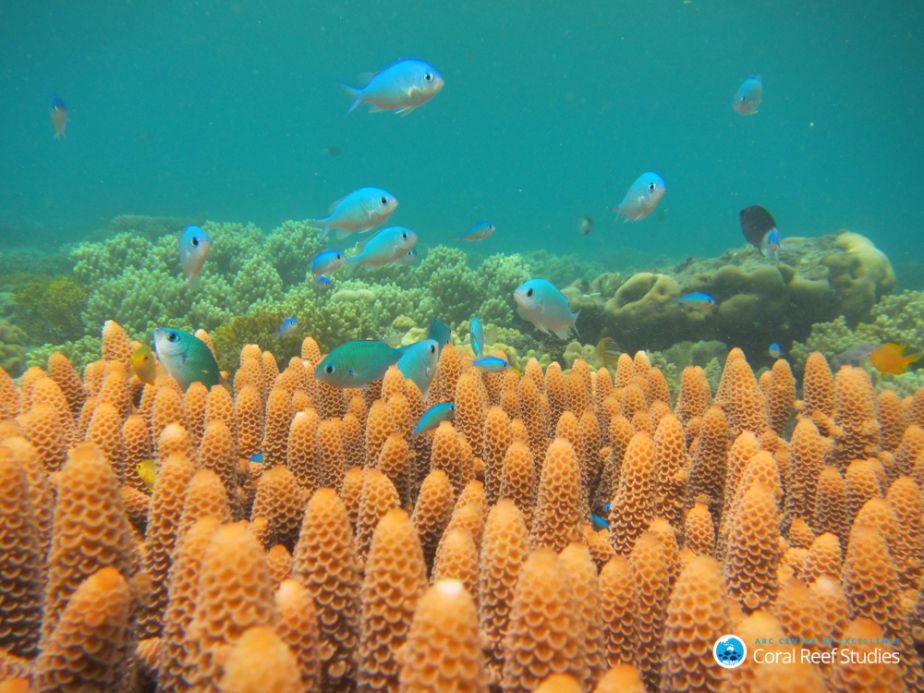
Chromis (damselfish), Lizard Island, Australia. Credit: ARC CoE for Coral Reef Studies/ Jodie Rummer

Fleet Of Aerial, Surface, And Underwater Robots Maps Ocean Front
July 3rd, 2018: Schmidt Ocean InstituteUsing multiple autonomous vehicles simultaneously, an interdisciplinary team of scientists and engineers returns to the United States after exploring the North Pacific Subtropical front -- a sharp boundary where cold fresh waters from the north meet warm salty waters from the south. The fronts are the most conspicuous oceanographic phenomena and the goal of this project was to demonstrate the use of distributed autonomous robotics to detect, track, and characterize these complex and dynamic processes with high accuracy across large spatial and temporal scales.
Bringing together aerial, surface, and underwater robotic vehicles with support from the research vessel Falkor, allowed the team to locate, map, and explore the front. It was detected approximately 1,000 nautical miles off the coast of Southern California several days ahead of the research party's arrival using autonomous surface vehicles. Multiple low cost submarine, surface, and aerial robots joined the front exploration from Falkor. The resulting distributed robotic system and intelligent sensor network helped the research team to track the complex oceanic front dynamically, in an easier, faster, and more cost effective way that would be possible with traditional means, such as only relying on ships.
Satellite observations are often not enough to track continuously changing ocean system. To locate the North Pacific front in the first place, this international group of scientists and engineers led by Dr. Joao Borges de Sousa, of the Laboratorio de Sistemas e Tecnologia Subaquatica (LSTS) from Porto University deployed one WaveGlider and two Saildrones into the target research area ahead of the ship's arrival. The data they acquired and transmitted to Falkor over satellite allowed the research party to optimize the deployment plans for all autonomous vehicles, including those that were delivered by and deployed from the vessel. Intelligent multi-vehicle control software, Ocean Space Center, developed at LSTS and deployed on Falkor was refined throughout the cruise to automatically optimize the operations of all deployed robots and facilitate the control of the robotic fleet for human operators. For the first time ever, a section of a major open-ocean front was mapped with sub-mesoscale resolution using a controlled fleet of dozens of autonomous robots. This detailed map of the ocean front dynamically composed from the acquired data enabled scientists to identify hotspots in which coordinated ship-robotic surveys were conducted with adaptive spatial and temporal resolution.
Operation of multiple assets in open sea can be difficult but, in less than three weeks, the underwater robots travelled over 1,000 nautical miles for approximately 500 hours, while the autonomous surface vehicles operated continuously, and the unmanned aerial vehicles performed over 25 flights totaling 10 hours. This project demonstrates a novel approach for distributing the observations of complex ocean dynamics across multiple underwater, surface, and air vehicles. Instead of sampling from one vessel in a single location, researchers can now monitor a much larger area with high resolution in space and time in a scalable and cost-efficient manner using a networked fleet of robotic vehicles supported by a vessel-based command center.
"I think it is essential for humankind to understand the big picture because, in the end, we are talking about the life-support system for the Earth," said João Sousa. "The oceans are an important component of that life-support system and they are not as tremendously huge as people tend to assume. In fact, if all of the oceans' water were put into a bubble, most of us would be stunned to see how impressively small it looks when compared with the Earth's size. And, yet, science still lacks the technology and tools to study the oceans overall health and functioning. "
To enable a sustainable presence in the oceans, the group further developed their specific software called Neptus and Ripples, the software behind the Open Space Center, that allowed them to view and control the robots in real time, gaining advanced situational awareness, remote visualization, and control, all via the Internet. This software toolchain enabled them to control the ensemble of vehicles in several unprecedented ways, notably operating non-stop for most of the expedition with just one operator.
Lessons learned and results obtained in this cruise can be applied to other frontal regions, as well as to other phenomena of the world Ocean. Thus, the technologies demonstrated in this expedition will help us to understand and monitor how key issues such as climate change, ocean acidification, unsustainable fishing, pollution, waste, loss of habitats and biodiversity, shipping, security, and mining are affecting global ocean sustainability and stewardship.
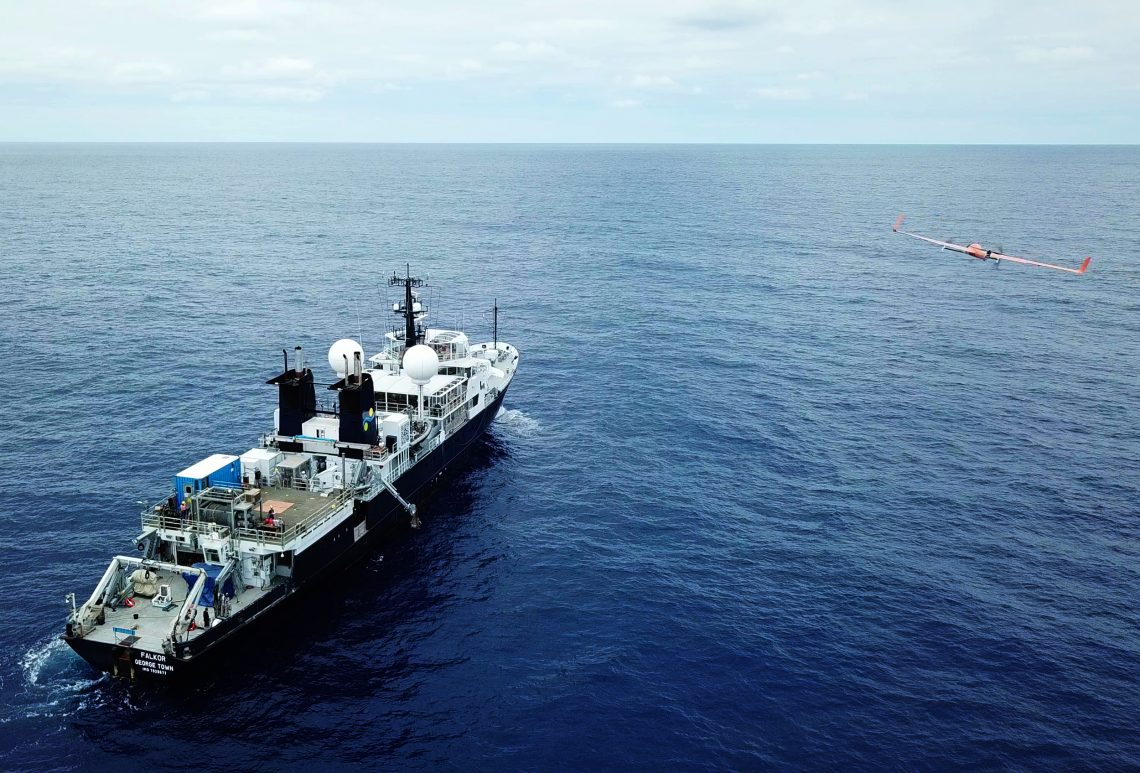
A Flightwave Edge UAV, piloted by Trent Lukaczyk, flies towards R/V Falkor. The Unmanned Aerial Vehicle worked in concert with underwater robotics and the crew onboard the ship gathering data. Credit: Schmidt Ocean Institute

Greenhouse Gases Were The Main Driver Of Climate Change In The Deep Past
July 2nd, 2018Greenhouse gases were the main driver of climate throughout the warmest period of the past 66 million years, providing insight into the drivers behind long-term climate change.
Antarctica and Australia separated around the end of the Eocene (56 to 22.9 million years ago), creating a deep water passage between them and changing ocean circulation patterns. Some researchers believe these changes were the driver of cooling temperatures near the end of the Eocene 'hothouse' period, but some think declining levels of carbon dioxide were to blame.
If the cooling had been caused by changes in ocean circulation, regions around the equator would have warmed as the polar regions cooled, shifting the distribution of heat on Earth. But changing the concentration of greenhouse gases would affect the total heat trapped in Earth's atmosphere, causing cooling everywhere (including in the tropics), which is what the researchers found. The findings were published in the journal Nature.
The synchronized evolution of tropical and polar temperature we reconstructed can only be explained by greenhouse gas forcing," said Margot Cramwinckel, a PhD candidate at Utrecht University in the Netherlands and first author of the paper. "Our findings are uniquely compatible with the hypothesis that the long-term Eocene cooling was driven by greenhouse gasses. This greatly improves our understanding of the drivers behind long-term climate change, which is important in order to predict the development of future climate change."
Climate change often has more intense effects near the poles than elsewhere on the planet, a phenomenon known as polar amplification.
The study found that temperature change was more dramatic near the poles than in the tropics during the Eocene, even though most of the period was extremely warm, leaving little to no ice near the poles.
"Even in a largely ice-free world, the poles cooled more than the tropics as temperature dropped," Cramwinckel said. "This indicates that greenhouse gas forcing by itself can cause polar amplification."
The researchers had one more question about polar amplification: does it reach some sort of limit?
"Our results support the idea that polar amplification saturates out at some point in warm climates and does not continue to increase with further warming," said Matthew Huber, a professor of earth, atmospheric and planetary sciences at Purdue University and co-author of the paper.
As a proxy for temperature, the research team looked at membrane lipids of simple, sea-surface dwelling organisms called Thaumarchaeota that change their membrane composition as temperatures change in deep sea sediment cores drilled near the Ivory Coast.
They combined these observations with climate models, produced by Huber's team at Purdue, to mesh together a timeline of temperature throughout the Eocene.
"The simulations took about four years of continuous computing to achieve equilibrated climate states at various carbon dioxide levels," Huber said. "For the first time, the climate model is capable of capturing the main trends in tropical sea surface temperatures and temperature gradients across a range of climate encompassing nearly 20 million years. The only problem is that the simulations required more carbon dioxide changes than observed, which demonstrates that this model is not sensitive enough to carbon dioxide."
Historically, researchers have had trouble reproducing temperature gradients between the tropics and the poles throughout the Eocene. These new climate models are capable of overcoming most of the issues faced by past models.
Margot J. Cramwinckel, Matthew Huber, Ilja J. Kocken, Claudia Agnini, Peter K. Bijl, Steven M. Bohaty, Joost Frieling, Aaron Goldner, Frederik J. Hilgen, Elizabeth L. Kip, Francien Peterse, Robin van der Ploeg, Ursula Röhl, Stefan Schouten, Appy Sluijs. Synchronous tropical and polar temperature evolution in the Eocene. Nature, 2018; DOI: 10.1038/s41586-018-0272-2
Self-Healing Seed Pods: Australian Genus Banksia
July 3rd, 2018
An international team of researchers including members of the Max Planck Institute of Colloids and Interfaces has discovered a self-sealing mechanism in the seed pods of Banksia plants: special waxes in the junction zone between the two pod valves melt at elevated environmental temperatures and thereby seal small fissures.
Bush fires can cause destruction -- but at the same time create new life: many species of the genus Banksia commonly found in Australia require heat in order for their seeds to be released from the pods. Since fires occur at irregular intervals, the mature seeds often remain in the two-valved pods for long time periods -- up to 17 years in some species. During this long period of time, the seed pods are constantly exposed to environmental challenges. This can cause tiny cracks where moisture or pathogens enter with the risk of destroying the seeds.
Scientists at the Max Planck Institute of Colloids and Interfaces in Potsdam, in collaboration with colleagues at TU Dresden, the University of Natural Resources and Life Sciences, Vienna, and Kings Park and Botanic Garden, Western Australia, showed how the plant protects the seeds: special waxes between the two valves of the seed pod that melt at elevated environmental temperatures ensure that these tiny openings are effectively sealed.
The study conducted by the researchers focused on three different Banksia species: Banksia serrata occurs in the east of Australia, while B. attenuata and B. candolleana are common in the south-west. The genus Banksia includes many species of evergreen trees and shrubs. The inflorescences are made up of numerous individual flowers which are pollinated by insects, birds or marsupials.
The seed pods of many species require very high temperatures for opening, eg caused by bush fires. Until recently, it was unclear how this temperature-related opening mechanism works: "It was commonly thought that the two valves of the seed pods were held together by resins that melt when heated, thereby opening the valves," says Jessica Huss, doctoral student at the Institute in Potsdam and first author of the study. "But in the junction zone between the valves we detected waxes rather than resins." In order to achieve a detailed chemical characterization, the researchers analysed the substances by means of Raman spectroscopy.
Further investigations revealed that the waxes melt between 45 and 55 degrees Celsius, while the seed pods didn't open until temperatures of between 54 and 76 degrees Celsius were reached. This was a clear indication that the waxes were not triggering the opening of the valves.
In a previously published study, the researchers put forward evidence that the opening mechanism is based on the mechanical properties and differing orientation of the cellulose fibres in the tri-layered pod. "The tissue dries while the seed ripens," says Jessica Huss. "During this process, the fibres shrink to differing degrees, thereby creating pre-stresses." Heat softens the innermost pod layer thereby releasing the pre-stresses and causing the two halves of the seed pod to split open."
But what are the functions of the waxes if they are not relevant for the opening mechanism? "Since the seeds remain on the plant for extremely long periods of time in some Banksia species, with the pod permanently exposed to UV radiation, heat and rain as well as the beaks of hungry birds, we assume that the waxes perform a protective function," says the scientist. "In many regions of Australia, temperatures of 45 to 55°C are not unusual in sun-exposed areas during the summer: the waxes melt on hot days and in this liquid state they are able to repeatedly seal small fissures."
Based on a simple model, the researchers tested whether such waxes are in fact capable of sealing fissures in wood. They used small panels of pinewood which they covered with a thin layer of carnauba wax and then applied cuts. They subsequently caused the wax to melt on some of the wood panels. A staining test showed that the liquid wax had effectively sealed the cuts within just 15 minutes: while it was possible to stain the cavities in the panels that hadn't been heated, those in the heated panels resisted staining.
"The demonstrated self-sealing mechanism is probably a widespread adaptation in the Banksia genus," says Michaela Eder. "Such a self-sealing temperature-based system might be interesting for applications, e.g. for dimensionally stable wood in outdoor structures."
Jessica C. Huss, Oliver Spaeker, Notburga Gierlinger, David J. Merritt, Ben P. Miller, Christoph Neinhuis, Peter Fratzl, Michaela Eder.Temperature-induced self-sealing capability of Banksia follicles. Journal of The Royal Society Interface, 2018; 15 (143): 20180190 DOI: 10.1098/rsif.2018.0190
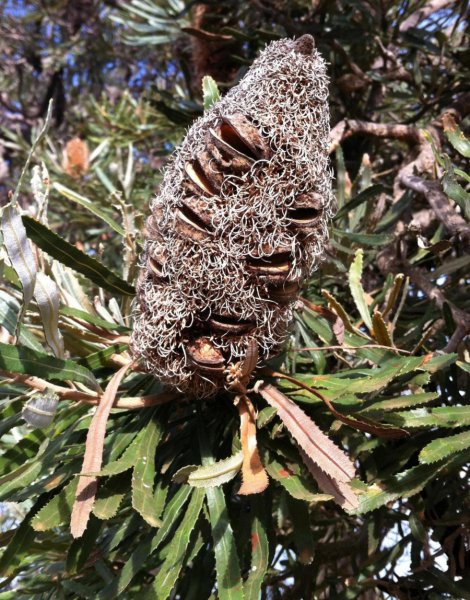
Ripe fruit of the Banksia attenuata from Western Australia, near Perth. The plants of this species also open many of their seed pods without exposure to fire. This happens mainly in high-precipitation areas where spontaneously released seeds have a relatively high probability of being able to establish themselves. A single pod typically contains two seeds. It is embedded in a lignified cone, here it is surrounded by dead flower remnants. Credit: Jessica Huss

The Caterpillar Lab: A Great Reminder That Its Summer In The Northern Hemisphere
In Marlborough, a town in Cheshire County, New Hampshire, United States, there's a great organisation called The Caterpillar Lab.The Caterpillar Lab is passionate about showcasing the amazing diversity of northeastern caterpillars through educational programs, the arts, and sciences.
Mission Statement: The Caterpillar Lab fosters greater appreciation and care for the complexity and beauty of our local natural history through live caterpillar educational programs, research initiatives, and photography and film projects. We believe that an increased awareness of one’s local environment is the foundation on which healthy and responsible attitudes towards the broader natural systems of this world is built.
You can visit their website to find out heaps of stuff and download resources too - even from here in Australia: www.thecaterpillarlab.org
They also regularly post fantastic information on their Facebook page, like the video below: www.facebook.com/TheCaterpillarLab
Who knew this before this organisation found it out for us?A great reminder about why the Internet was created for free and howyou can choose to find some brilliant insights into the Whole WideWorld around us - around us here and around us outside of Oz.This is why it ( the World Wide Web*)was shared in the first place - to share and grow Knowledge.
*The World Wide Web (abbreviated WWW or the Web) is an information space where documents and other web resources are identified by Uniform Resource Locators (URLs), interlinked by hypertext links, and accessible via the Internet. English scientist Tim Berners-Lee invented the World Wide Web in 1989.
The Caterpillar Lab is a great reminder, during these cold weeks, that Spring will soon be here again with our own caterpillars and then - butterflies!
Ants interacting with a silvery blue butterfly caterpillar at The Caterpillar Lab!One of the highlights of every summertime caterpillar lab show is watching these ant-caterpillar interactions play out under our digital microscopes. Last year we joined our audiences in awe as we observed inflating tentacular organs for the first time. Even our old-time caterpillar lab experts can still be surprised and delighted by these strange and complex little creatures.
Red-Capped Plovers: Pitt Town Lagoon (Windsor)
Published on 4 July 2018 by Birds in Back Yards TVIn late June 2018 we spotted a pair of Red-capped Plovers (Charadrius ruficapillus) at Pitt Town Lagoon, NSW. Although these diminutive birds are generally abundant across Australia, they are not a common sight at this freshwater lagoon. They are more likely to be seen at saline to brackish inland waters, tidal flats and ocean beaches. In certain locations they are resident, while some members of the species move between the coast and inland in response to rain. Red-capped Plovers have been categorised as beach-nesting shorebirds, but they are more flexible in their nest location than the Critically Endangered (NSW) Hooded Plover. Nests and chicks on ocean beaches face several threats. Go to www.abc.net.au/news/2016-01-18 to read more about the particular challenges facing Red-capped Plovers on urban coastlines. To see what Birdlife Australia is doing to help various beach-nesting shorebirds visit http://birdlife.org.au/projects/beach...
The Red-capped Plovers we observed at Pitt Town Lagoon (near Windsor) were quite wary and hard to film due to their size. The male plover was more active in the area where we were based and a portable bird blind/hide enabled close-ups. The second photo (after the lagoon scene) and all the video footage show this rufous-headed male. The female (in the third photo) is comparatively muted in her colouring, although the sexes aren’t always distinguishable on this basis. The more reliable indicator is the loral stripe (narrower and darker for the male). We also noticed that the plovers weren’t as vocal as most birds around them (e.g. White-headed Stilts, Red-kneed Dotterels, Black-fronted Dotterels, Australasian Swamphens, Willie Wagtails and Magpie-larks). The only call we detected is included near the beginning of the third photo. Typically, their call is quite abrupt and not easily heard amongst other sounds.
The 8th Annual Dr Robert Dixon Memorial Animal Welfare Symposium
by Sydney School of Veterinary Science, The University of SydneyLoving and Hating Animals in the WildDate: Wednesday, 18 JulyTime: 2:00 – 4:00pmVenue: Webster Lecture Theatre, Veterinary Science Conference Centre, The University of Sydney
Chaired by Dr Roselyn Dixon, Senior Lecturer, Faculty of Education, University of Wollongong. A panel discussion on the ethical treatment of invasive and native fauna, featuring:- Dr Peter Fleming, Research Leader, Predator & Prey Management,Vertebrate Pest Research Unit, NSW Department of Primary Industries
- Nick Boyle, Manager, Taronga Conservation Society
- Dr Andrea Harvey, Veterinarian, PhD scholar (wild horse welfare), Centre for Compassionate Conservation, University of Technology Sydney
- Dr Bidda Jones, Chief Science & Strategy Officer, RSPCA Australia
- A/Prof Daniel Ramp, Director, Centre for Compassionate Conservation, University of Technology Sydney
The chair will invite the panel to address a variety of questions. There will be no questions from the audience. However, it is anticipated that panellists will be available to answer questions informally after the event.
Dr Robert Dixon (1951 – 2011)With a BSc(Vet) (1973) and BVSc (1974) from the University of Sydney, Robert Dixon completed his PhD in 1980 in New Zealand and took up an academic appointment in 1983 at the University of Sydney's Faculty of Veterinary Science. For many years Robert was Associate-Dean for Animal Welfare while serving on the University's Animal Ethics Committee.
Robert’s email signature finished with a quote from Mohandas Gandhi - “The greatness of a nation and its moral progress can be judged by the way its animals are treated”.
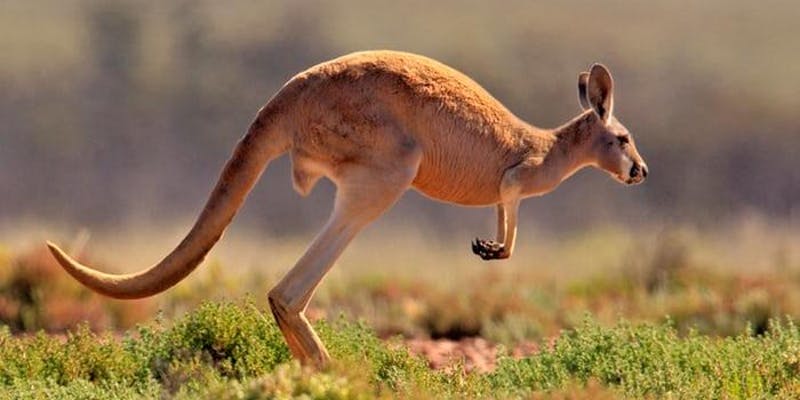
- Dr Peter Fleming, Research Leader, Predator & Prey Management,Vertebrate Pest Research Unit, NSW Department of Primary Industries
- Nick Boyle, Manager, Taronga Conservation Society
- Dr Andrea Harvey, Veterinarian, PhD scholar (wild horse welfare), Centre for Compassionate Conservation, University of Technology Sydney
- Dr Bidda Jones, Chief Science & Strategy Officer, RSPCA Australia
- A/Prof Daniel Ramp, Director, Centre for Compassionate Conservation, University of Technology Sydney

New Protections For Australia's World Class Marine Parks
Sunday July 1st, 2018: Joint media release - The Hon. Josh Frydenberg MPMinister for the Environment and EnergySenator the Hon. Anne RustonAssistant Minister for Agriculture and Water ResourcesThe Hon. Melissa Price MPAssistant Minister for the EnvironmentAn additional 2.3 million kilometres of Australian waters will be managed under a world-leading system of marine parks for the first time, as five new management plans come into effect from today.
This brings all 60 Australian Marine Parks, covering some 3.2 million square kilometres, under protection – the second largest network of managed marine parks in the world.
The new management arrangements cement Australia as a leader in marine protection and provide certainty for marine park users. These parks strike the balance between outstanding conservation outcomes and securing the future of Australia’s sustainable fishing and tourism industries.
To assist industries and communities transition to the new management arrangements, the Government has announced an adjustment package of $35 million.
The package will include:- direct assistance to those affected commercial fishers with a recent history of fishing in Australian Marine Parks as they transition their business to the new operating environment;
- grants to help marine users and industries engage in marine park management, including a sub-component of up to $2 million for infrastructure to provide recreational and charter fishers as well as other tourism operators with secure moorings; and
- support to encourage uptake of vessel monitoring systems.
Through the grants program, there are great opportunities for all marine users to engage with managing these amazing places for future sustainability.
Industry consultation will soon commence on the fishing business assistance program.
Further information about Australian Marine Parks is available viaparksaustralia.gov.au/marine/.
- direct assistance to those affected commercial fishers with a recent history of fishing in Australian Marine Parks as they transition their business to the new operating environment;
- grants to help marine users and industries engage in marine park management, including a sub-component of up to $2 million for infrastructure to provide recreational and charter fishers as well as other tourism operators with secure moorings; and
- support to encourage uptake of vessel monitoring systems.
Humpback Whale Successfully Disentangled In NPWS Operation Off Sydney
July 3rd, 2018: NSW OEHA humpback whale caught in a 100 metre length of rope off Sydney has been successfully disentangled 3 July by a specialist National Parks and Wildlife Service (NPWS) whale disentanglement crew.
NPWS spokesperson Peter Bergman said the entangled sub-adult whale, which was travelling north at speed with two adults, was first spotted this morning off Cape Solander.
"The specially-trained NPWS crew located the entangled whale in the early afternoon about one kilometre off North Head and was able to attach buoys to the animal to slow it down to enable the rope to be cut loose.
"Once the whale was disentangled, the team collected the rope and continued to monitor the whale to ensure there were not any additional entanglements.
"Conditions were very favourable today, with a calm sea and the whale appearing during the middle of the day when we had sufficient daylight to complete this dangerous disentanglement operation," he said.
This was a multi agency response with assistance from RMS, DPI Fisheries, Marine Rescue NSW, Port Authority NSW, NSW Police and ORRCA (Organisation for the Rescue and Research of Cetaceans in Australia).
"This is an excellent outcome for this whale, which is just one of around 30,000 humpback whales migrating north along the NSW coast at this time of year," said Mr Bergman.
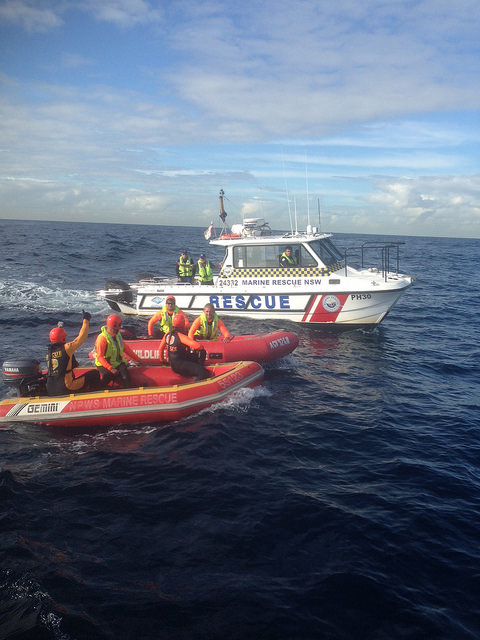

Have Your Say On The Management Of Forests
May 15, 2018: Media Release
The NSW Government has begun consultation on the new Coastal Integrated Forestry Operations Approvals (IFOA), which sets out how native forestry operations are managed and regulated on public land in NSW.
Minister for Lands and Forestry Paul Toole and Minister for the Environment Gabrielle Upton said the Coastal IFOA remake was a vital step forward in the NSW Government’s forestry reform agenda.
“The NSW Government is committed to the long term and sustainable management of NSW’s forestry estate, for the benefit of the community, environment and our $2.4 billion forestry and product manufacturing industry,” Mr Toole said.
“The NSW Government is determined to get the right balance between the environment and industry – environmental standards can be strengthened at the same time as providing long term security of wood supply and certainty to investors and the industry.
“For the proposed new Coastal IFOA, this means ensuring that we do not erode environmental values or impact the critical wood supplies that our regional economies or industry rely on.
“Over the past six months, we have undertaken consultation on the Regional Forest Agreements, and this is the next important step.”
Ms Upton said the new Coastal IFOA includes once-in-a-generation changes that will ensure the environment is protected.
“For the first time ever, minimum thresholds are being set for the permanent protection of threatened species and habitat across the landscape, and the rules will be more transparent and enforceable,” Ms Upton said.
New legislation will be introduced that will increase penalty notices for not complying with the Coastal IFOA from $1,100 to $15,000. All other private native forestry businesses and regulated industries in NSW already face fines of at least $15,000.
“These changes are making it fairer for all industries to do business in NSW, while offering further protections to our State's forests,” Ms Upton said.
Other changes to the Coastal IFOA include:- The merger of four current Coastal IFOAs into a single approval for the entire coast of NSW;
- New rules that place limits on harvesting impacts over time and across the landscape;
- Map-based protections with simplified rules for operating near boundaries;
- Increased mapping of threatened ecological species, koala habitats, streams and trees, and;
- Permanent protections for giant trees and hollow-bearing trees.
- To complement the new Coastal IFOA, the NSW Government will soon commence a mapping exercise, applying modern technologies to gain a better understanding of key state forest sites on the north coast.
This work will be overseen by the Natural Resources Commission with independent environmental assessments to be designed and carried out by the Office of Environment and Heritage. The public will have a chance to have their say on the proposed framework and mapping approach in 2019.
For more information, and to have your say on the Coastal IFOA, visit: https://engage.environment.nsw.gov.au/forests
- The merger of four current Coastal IFOAs into a single approval for the entire coast of NSW;
- New rules that place limits on harvesting impacts over time and across the landscape;
- Map-based protections with simplified rules for operating near boundaries;
- Increased mapping of threatened ecological species, koala habitats, streams and trees, and;
- Permanent protections for giant trees and hollow-bearing trees.
- To complement the new Coastal IFOA, the NSW Government will soon commence a mapping exercise, applying modern technologies to gain a better understanding of key state forest sites on the north coast.
Extension Of Public Consultation For Draft Coastal IFOA
Following requests from stakeholders, the Minister for the Environment and Minister for Lands and Forestry have decided to extend the public consultation period for the draft Coastal IFOA for an additional two weeks. The deadline for submissions will now be Friday 13 July 2018.______________________________
From 'Proposed multi-scale landscape approach – download theMulti Scale Approach Factsheet here' Doc.;COASTAL IFOA SCALE• Includes all public coastal forests in NSW and consists of over 5.2 million hectares.• Across this area of public forests is a patchwork of State Forests and forest protected in National Parks and State Flora Reserves.• State Forests make up around 30% of the public forests in the Coastal IFOA area. Native timber production forests cover around 16% of this area.Environmental protections include:• An established network of protected public land conserving important habitat and ecosystems across coastal NSW.• The broad landscape-based habitat protection network includes National parks, Flora Reserves and special management zones.• Annual timber volume caps are also set to ensure a long term ecologically sustainable supply of timber.• Reporting requirements apply and monitoring to evaluate and ensure environmental outcomes are being achieved.
MANAGEMENT ZONE SCALE• A defined geographic region with an average size of 50,000 hectares.• Multiple timber production forests occur within each management area.• These areas will be fixed and mapped at the commencement of the proposed IFOA.• On average 50% of the management zone of state forests is protected.Environmental protections include:• Annual limits on the amount of harvesting in each management area to distribute harvesting across the landscape.• A maximum of 10% of a management area can be harvested per year.• If the management area is zoned for intensive harvesting,then a maximum of only 5% of that management area can be intensively harvested per year
LOCAL LANDSCAPE AREA SCALE• A defined area of timber production forests no larger than 1500 hectares.• On average there are four local landscape areas in each State Forest.• These areas will be mapped out progressively over time.• An average of 38% is protected before the new wildlife habitat clump requirements are considered. This will increase to an average of 41%.Environmental protections include:• A minimum of 5% of the harvest area to be permanently protected as a wildlife habitat clump to maintain habitat diversity and connectivity.• Rainforest, high conservation value old growth, habitat corridors and owl habitat will continue to be protected.• Threatened ecological communities have been mapped and will be excluded from harvesting.• Streams are more accurately mapped and exclusion zones apply to provide landscape connectivity and protect waterways.• Distributes intensive harvesting across the landscape and over a minimum 21 year period.• Improved koala mapping to retain koala browse trees to support movement between areas and food resources.
SITE• A site is the area where harvesting is taking place. Sites vary in size from about 45 to 250 hectares.• There are many sites, called coupes or compartments, within each local landscape area.• An average of 41% of State Forests at a site scale will be protected, increasing to 45% with added tree retention clumps.
Environmental protections include:• Areas will be permanently protected to provide short term refuge, maintain forest structure, and protect important habitat features.• Additional areas no less than 5 – 8% of the harvest area will be permanently set aside as new tree retention clumps.• Hollow-bearing trees, nest and roost trees and giant trees will be permanently protected to provide ongoing shelter and food resources.• Some target surveys will be retained for unique species of plants and animals that require protection.• Sites will now be measured, mapped and monitored with mobile and desktop devices.
Visit: Proposed changes to timber harvesting in NSW's coastal forests - NSW Government; 'Once approved, the new Coastal IFOA will set the rules for how we use and harvest these forests so it’s important that you have your say.'
Boosting Environment & Energy Cooperation With France, The United States & Canada
July 4th, 2018: Media release - The Hon. Josh Frydenberg MP, Minister for the Environment and Energy
From 5 to 12 July 2018, I will travel to France, the United States of America and Canada to further promote international cooperation on environment and energy issues.
In Paris, I will deliver an address to the International Energy Agency and meet Executive Director Fatih Birol to discuss the Turnbull Government’s plans for regular and comprehensive energy security assessments that will identify risks and foster the resilience of the energy sector.
Together with Great Barrier Reef Marine Park Authority Chair Dr Russell Reichelt, I will meet in Paris with the Director General of the United Nations Educational, Scientific and Cultural Organisation. We will discuss Australia’s leadership in the protection of the world’s ecosystems, including Australia’s commencement this week as co-chair of the International Coral Reef Initiative and the Turnbull Government’s recent $500 million investment in the Great Barrier Reef, the largest ever single investment in reef protection and restoration in Australia’s history.
I will also meet with the Head of the French Environment and Energy Management Agency and visit a significant waste-to-energy plant in metropolitan Paris to learn more about the French experience in waste management.
In New York, I will share Australia’s experience in forest management at the United Nations Forum on Forests and discuss global environmental and energy challenges at a Council on Foreign Relations roundtable. I will also meet with a range of energy executives including from SunEnergy1, Bloomberg New Energy Finance and major investment funds.
In Montreal, I will represent the Australian Government at and deliver a keynote address to the Australia-Canada Economic Leadership Forum as well as meet business leaders, with two-way trade in goods and services between Australia and Canada worth more than $6 billion per year.
From 11 to 12 July, I will represent the Australian Government at the Australian American Leadership Dialogue in Washington DC where I will also deliver an address and participate in a panel discussion on the Australia-US relationship. The Dialogue provides an excellent opportunity to outline Australia’s environment and energy reform agenda as well the strengths of the Australian-American alliance.
While in Washington, I will also meet with White House officials, the Chairman of the House Energy and Commerce Committee and the Environmental Protection Agency (EPA) Administrator.
PNHA Newsletter 76
Read about wild life in the 'Burbs - How to identify local owl calls, the Wing Tag project and PNHA's latest campaign news.
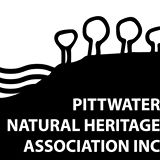

A Once A Year Extraordinary Experience To Visit A Remote Maritime Outpost
July 4th, 2018: NSW OEHA lucky handful of people will have the opportunity soon to visit one of the most extraordinary and remote lighthouses in Australia when helicopter tours of South Solitary Island resume for only two weekends in early August.
The tours are immensely popular but because of the combination of remoteness, weather and the timing of seabird nesting seasons they are only conducted in the first two weekends in August in what is now a decade long partnership between the NSW National Parks and Wildlife Service (NPWS) and Precision Helicopters at Coffs Harbour.
NPWS Area Manager, Glenn Storrie, said it's a tour of the past as well as the present.
"It's just an amazing way to see the island, flying in from the mainland and once you've arrived a tour of this rocky outcrop will confirm just how hard it would have been to construct a lighthouse and the associated keeper's quarters.
"The tour will also take you back in time to when families lived here as permanent residents. It's a lifestyle that existed for more than a century and which does not exist anymore since the light station complex became automated and more recently the advent of GPS technology," Mr Storrie said.
Former island resident, Peter Ross, whose childhood was spent exploring the nooks and crannies of this ocean outpost with his siblings said of the tours that, "it really is a very special opportunity to see first hand just what it was like to work and live as a family in such an extraordinary place."
"We had a pump-fed sea water pool, a volleyball net strung up in the head keeper's cottage courtyard and regular games of cricket with Mum as umpire. We turned our Hills Hoist into a roundabout and built our own set of swings."
"My brothers and I constructed billy carts that we used to tear down the concrete slope towards the gantry. The carts were made using whatever we could lay our hands on; mower wheels to start with and eventually we got some pram wheels. That made the ride a little smoother."
"We quickly understood the risks of roaming free across the island. If you stuffed up, it could be dangerous, so we learnt our limits."
"Mum would blow a whistle to call us back for dinner. If we didn't hear it or were late returning, it was on us. It taught us to be alert, to be responsible and to look out for each other," he said.
If you've ever imagined what it would be like to live on a tiny island and would like to hear a firsthand account of the experience, then don't miss your chance to meet Peter and other ex-residents on South Solitary Island this August.
Tours operate between Saturday 4 and Sunday 12 August 2018. For more information and tour bookings contact Precision Helicopters, on 02 6652 9988 or email: precisionhelis@bigpond.com
More information: South Solitary Island helicopter tour
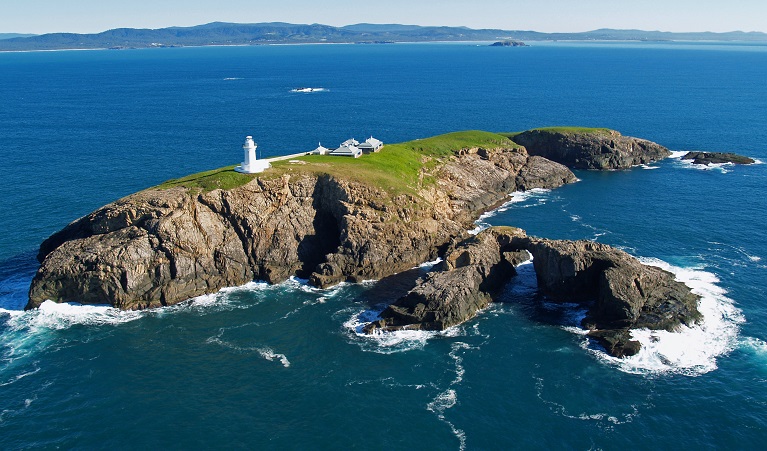
Aerial view of South Solitary Island Historic Site. Photo: Precision Helicopters/OEH

Breakthrough PE Program Giving Kids Fitness And Focus: IPLAY!
 Photo: Education Minister Rob Stokes, MP for Pittwater, joined students at Marton Public School as they enjoyed an iPLAY session. Image courtesy NSW Education Department, Christo DepeduTrials of an innovative physical activity program iPLAY have shown it can lift aerobic fitness in primary students by as much as 20 per cent and halve the number of students at risk of heart disease.
Photo: Education Minister Rob Stokes, MP for Pittwater, joined students at Marton Public School as they enjoyed an iPLAY session. Image courtesy NSW Education Department, Christo DepeduTrials of an innovative physical activity program iPLAY have shown it can lift aerobic fitness in primary students by as much as 20 per cent and halve the number of students at risk of heart disease.
A new physical education program called iPLAY trialled in a small number of NSW public primary schools is showing such impressive results it will now be expanded across 150 schools.
Education Minister Rob Stokes and Member for Heathcote Lee Evans visited Marton Public School, a school where iPLAY is already used, to reveal researchers had found strong evidence the PE program was improving aerobic fitness and potentially reducing the risk of heart disease.
"All the evidence points to iPLAY being a genuine breakthrough for the health of many of our young people," Mr Stokes said.
The iPlay program aims to get students to do 150 minutes of high quality physical activity per week. Activity includes 2-3 classroom "energiser breaks", physically active homework once a week, after-school physical activity at least once a week and physical activity during recess and lunch.
The NSW Department of Education has funded the development of iPLAY with support from researchers at the University of Newcastle and the Australian Catholic University.
An initial trial involving 460 students in eight NSW public schools whose teachers undertook the iPLAY training found the students involved increased their aerobic fitness by more than 20 per cent over the 12-month period.

Winter In Pittwater
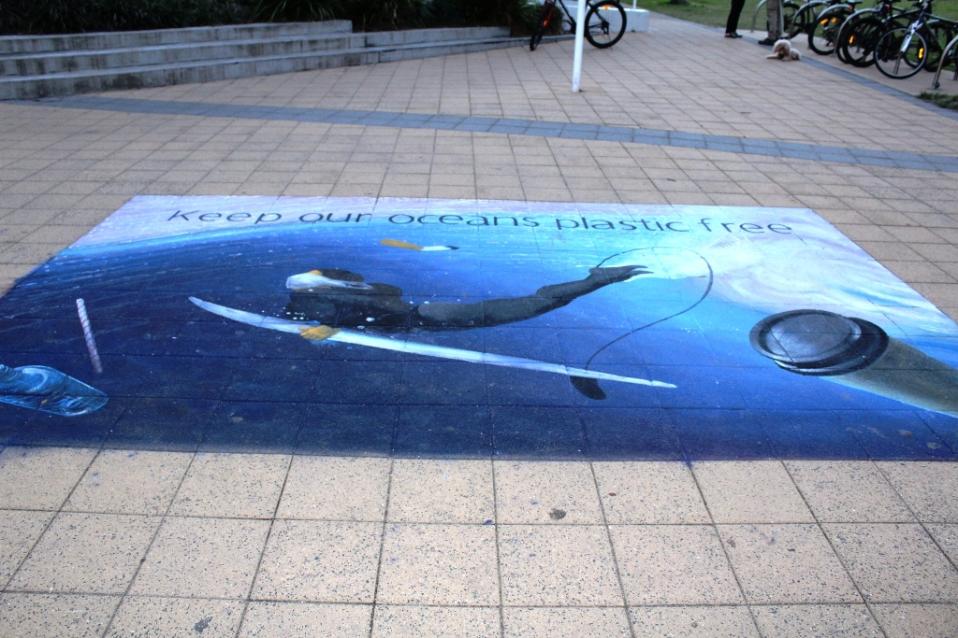 Spotted: Keep Our Oceans Plastic Free (Chalk art outside Avalon Rec. Centre)
Spotted: Keep Our Oceans Plastic Free (Chalk art outside Avalon Rec. Centre)
There's a great Plastic Free Event hosted by Living Ocean coming up this Plastic Free July - visit -
Living Ocean’s Community Celebrate Living A Plastic Free Life!: For the first time, ocean conservation charity LIVING OCEAN will host a HUGE day of beach cleans, great food, live music, workshops, face painting, films and so much more to showcase all the great work our community is doing in order to live a Plastic Free Life. Come along to Barrenjoey High School, off Tasman Road in Avalon from 10am – 4pm on Saturday 28 July.
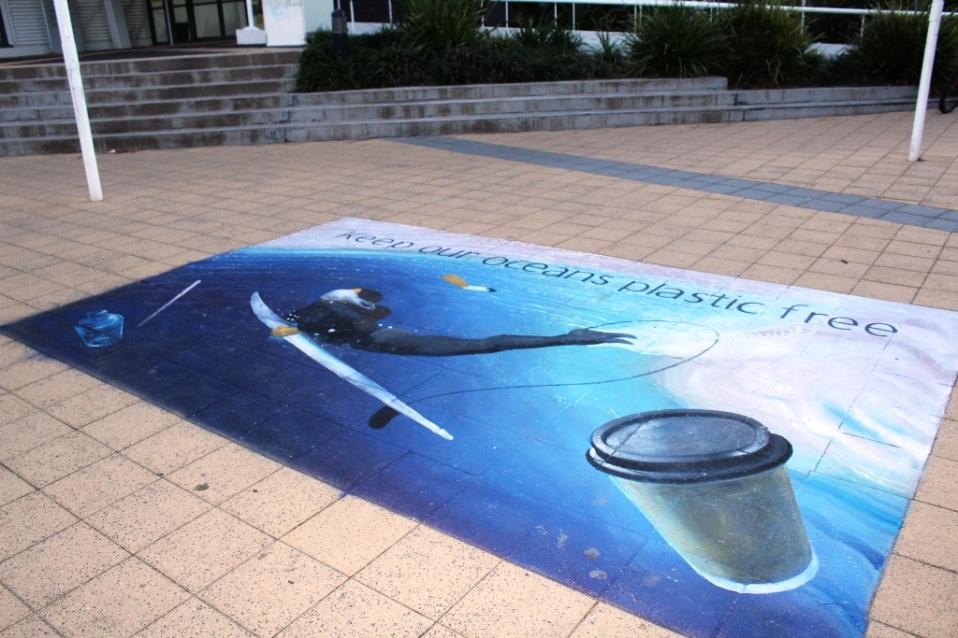
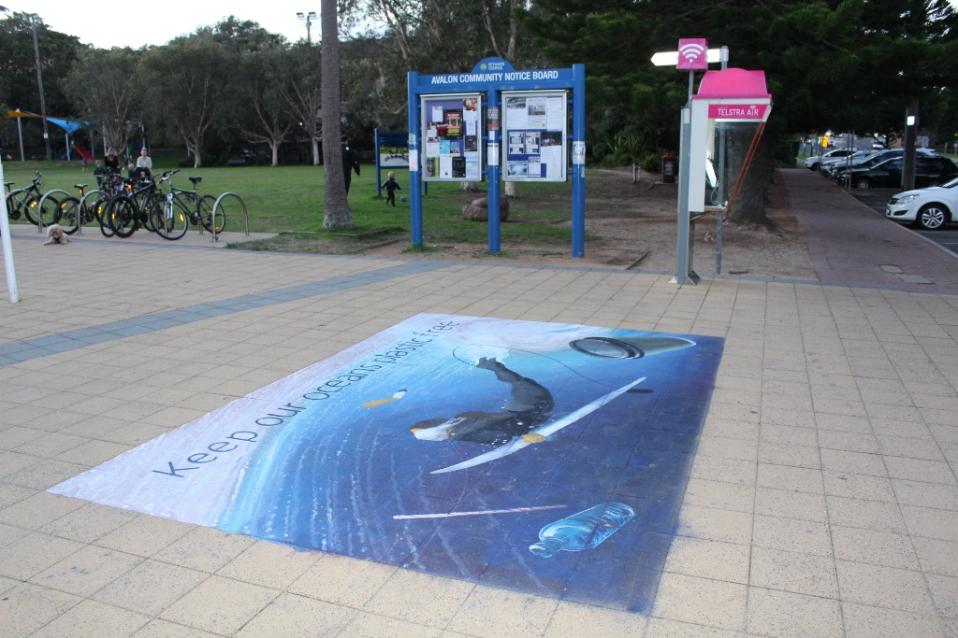
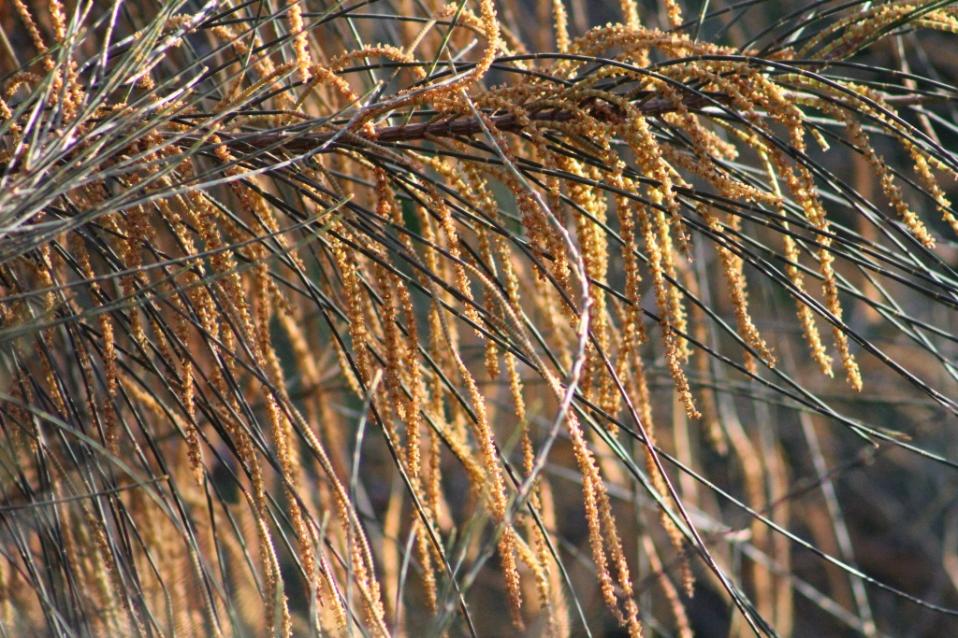 Winter Golds - She oaks in Pittwater
Winter Golds - She oaks in Pittwater





Skate Rising Mona Vale Event
Come join us on July 14th at the Mona Vale Skate Park in Sydney, Australia, for Skate Rising's International Day of Service, where we will be holding 6 events on the same day around the world!
Girls between ages 4-18 will help assemble homeless support kits, complete commit to kindness with anti-bullying contracts, and participate in a FREE learn-to-skateboard workshop with professional instructors!
We will have loaner skateboards, pads, and helmets available for those interested, and there will also be a free raffle with incredible prizes!
Smart Drumlines In WA Can Save Lives And Prevent Shark Attacks
July 4th, 2018: Media release - The Hon. Josh Frydenberg MP, Minister for the Environment and Energy
In the last 25 years, there have been 17 fatal shark attacks in Western Australia, more so than in any other state in the country.
The Turnbull Government has been calling on the Western Australian Government to take more rigorous and proactive measures to protect its citizens against shark attacks, including the rollout of non-lethal SMART drumlines.
Following a discussion between myself and WA Fisheries Minister Dave Kelly on 30 May, the Commonwealth committed to providing Western Australia with a list of potential sites where SMART drumlines could be deployed. This list has been provided to the Western Australian Government.
At a cost of between $5-7 million for a six month period, it is proposed 176 SMART drumlines be deployed and monitored at key locations across the Perth metropolitan and southwest regions.
Deployed from Quinns Rock Beach to Mandurah in the metropolitan area and from Bunbury to Prevelly in the southwest, the SMART drumlines would cover those areas where there has been 11 out of 17 fatal shark attacks in the last 25 years.
The exact locations of the drumlines would be subject to local conditions.
The plan would cover approximately 260 kilometres of coastline with about 80 per cent of WA’s population living within 30 kilometres of the proposed protected areas. The cost of the deployment of the SMART drumlines would be borne by the Western Australian Government, as shark management is the primary responsibility of state governments.
Drumlines in additional locations where attacks have occurred should also be considered by the Western Australian Government.
SMART drumlines have been trialled with great effect in New South Wales where more than 200 target sharks were captured over a 12 month period. Following the success of its plan, the New South Wales Government has offered Western Australia the use of five SMART drumlines.
Importantly, the Queensland and New South Wales Governments have had in place extensive measures to manage shark attacks, including nets and drumlines, for a number of years, with only one fatal shark attack at a protected beach in more than half a century.
Given the high incidence of shark attacks in Western Australia and the recent release of a CSIRO report into great white shark numbers of the west coast off Australia, now is an opportune time for the Western Australian Government to take further steps to protect is citizens from shark attacks.
Deploying the SMART drumlines in the locations outlined by the Commonwealth would be a significant and welcome step forward.
Marine Aquaculture Strategy
The Department of Primary Industries is seeking feedback on the draft NSW Marine Waters Sustainable Aquaculture Strategy.
What's this about?The NSW Marine Waters Sustainable Aquaculture Strategy promotes best practice for marine aquaculture. It provides a framework for the NSW Government to ensure the development of aquaculture does not jeopardise its ecological sustainability and social licence.
Marine aquaculture is the farming of marine animals and plants, especially fish, shellfish and seaweed, in natural or controlled marine or estuarine environments.
The strategy:- provides a regulatory and industry best practice framework for NSW marine waters aquaculture to develop sustainably
- provides a platform for the government to identify suitable marine aquaculture areas
- defines the development approval and assessment processes
- provides guidance to industry and consent authorities to prepare and assess applications for aquaculture development
- provides the community and stakeholders with relevant advice to inform them about sustainable marine waters aquaculture
- avoids ad hoc aquaculture development in NSW.
The strategy area applies to NSW marine waters, to three nautical miles where it meets Commonwealth waters. It does not include estuarine aquaculture.
Have your say
RegionsCentral CoastCentral West & OranaFar WestHunterIllawarra-ShoalhavenNew England & North WestNorth CoastRiverina MurraySouth East & TablelandsSydneyWestern Sydney
- provides a regulatory and industry best practice framework for NSW marine waters aquaculture to develop sustainably
- provides a platform for the government to identify suitable marine aquaculture areas
- defines the development approval and assessment processes
- provides guidance to industry and consent authorities to prepare and assess applications for aquaculture development
- provides the community and stakeholders with relevant advice to inform them about sustainable marine waters aquaculture
- avoids ad hoc aquaculture development in NSW.
9 Million More Ways To Save Threatened Species
Tuesday June 26, 2018: NSW Minister for the Environment, The Hon. Gabrielle Upton
The NSW Government has put $9 million on the table to deliver more local projects to save threatened species.
"This is the first time this scale of funding has been available to the community from the Saving our Species (SOS) program," Environment Minister Gabrielle Upton said.
"The new grants program is designed to maximise the number of species that can be secured in the wild under the NSW Government's Saving our Species initiative.
"Saving our Species is investing $100 million over five years to secure populations of threatened species in the wild. Projects are currently in place for some 350 species. Applications open today and I encourage groups to apply for funding for local projects," Ms Upton said.
"By creating long-term partnerships between the NSW Government, community groups and other organisations, more threatened plants and animals can be managed and supported. All applicants are strongly encouraged to develop and deliver projects with other collaborating partners."
Minister Upton announced the grant funding at a function for the Foundation for National Parks and Wildlife held in Manly today.
"This grant is a tremendous opportunity for community groups and organisations to identify a threatened or iconic species and seek shared funding for a project," said the Member for Manly, James Griffin.
"Here in Manly, native animals such as the Long Nosed Potoroo on North Head have benefitted from Save our Species funded programs.
"It's a win for the community, a win for the environment and, most importantly, it's a win for animals facing the threat of extinction," he said.
Under the program individual grants of up to $350,000 are available for projects that will run for 7 years and will require a contribution from the successful organisation and project partners.
Applications are open from 26 June – 13 August 2018.
More information and forms on the: Saving Our Species Contestable Grants Program 2018 webpage
Tuesday June 26, 2018: NSW Minister for the Environment, The Hon. Gabrielle Upton
The NSW Government has put $9 million on the table to deliver more local projects to save threatened species.
"This is the first time this scale of funding has been available to the community from the Saving our Species (SOS) program," Environment Minister Gabrielle Upton said.
"The new grants program is designed to maximise the number of species that can be secured in the wild under the NSW Government's Saving our Species initiative.
"Saving our Species is investing $100 million over five years to secure populations of threatened species in the wild. Projects are currently in place for some 350 species. Applications open today and I encourage groups to apply for funding for local projects," Ms Upton said.
"By creating long-term partnerships between the NSW Government, community groups and other organisations, more threatened plants and animals can be managed and supported. All applicants are strongly encouraged to develop and deliver projects with other collaborating partners."
Minister Upton announced the grant funding at a function for the Foundation for National Parks and Wildlife held in Manly today.
"This grant is a tremendous opportunity for community groups and organisations to identify a threatened or iconic species and seek shared funding for a project," said the Member for Manly, James Griffin.
"Here in Manly, native animals such as the Long Nosed Potoroo on North Head have benefitted from Save our Species funded programs.
"It's a win for the community, a win for the environment and, most importantly, it's a win for animals facing the threat of extinction," he said.
Under the program individual grants of up to $350,000 are available for projects that will run for 7 years and will require a contribution from the successful organisation and project partners.
Applications are open from 26 June – 13 August 2018.
More information and forms on the: Saving Our Species Contestable Grants Program 2018 webpage
NOPSEMA - Open For Comment: Environment Plan Assessment Guidance
Overview
Since 2012, NOPSEMA has developed a series of guidance documents to inform and assist stakeholders in understanding NOPSEMA’s decision-making on environment plans and advise titleholders on how to interpret and meet the requirements of the Offshore Petroleum and Greenhouse Gas Storage (Environment) Regulations 2009 (Environment Regulations). This guidance is comprised of a number of different document types, including:- policies that provide NOPSEMA’s interpretation of legislative provisions
- guidelines that provide NOPSEMA guidance on how to meet legislative requirements
- guidance notes that provide NOPSEMA’s expectations on an environmental management topic
- information papers that provide further information, background and practices to foster improved environmental management outcomes.
In November 2017, the Minister for Resources and Northern Australia, Senator the Hon Matthew Canavan, announced a series of changes to improve the transparency of offshore petroleum environmental management. The Department of Industry, Innovation and Science has commenced work to develop the necessary regulatory amendments.
In preparation for these changes, NOPSEMA is now seeking feedback on its guidance documents relating to the assessment of environment plan.
Guidance open for commentNOPSEMA is seeking comment on the following key documents:PL1347 - Environment plan assessment - Rev 6 - April 2017 (PDF 534KB)GN1344 - Environment plan content requirements - Rev 3 - April2016 (PDF 1.1MB)GL1721 - Environment plan decision making - Rev 5 - June 2018(PDF 342KB)GL1566 - Environment plan summaries - Rev 1 - July 2016 (PDF 196KB)IP1411 - Consultation requirements under the OPGGS Environment Regulations 2009 - Rev 2 - December 2014 (PDF 184KB)
Comments may also be provided on any other published environmental management guidance document on the Environment Resources page.
How to provide commentComments are to be provided by 20 July 2018 using theONLINE SURVEY. Enquiries should be directed toenvironment@nopsema.gov.au.
Next stepsNOPSEMA will consider the feedback received during the public comment period and may also conduct further consultation with stakeholders to address comments received. NOPSEMA will aim to publish a report by the end of 2018 to collate the comments received and provide a response on the merits of the feedback.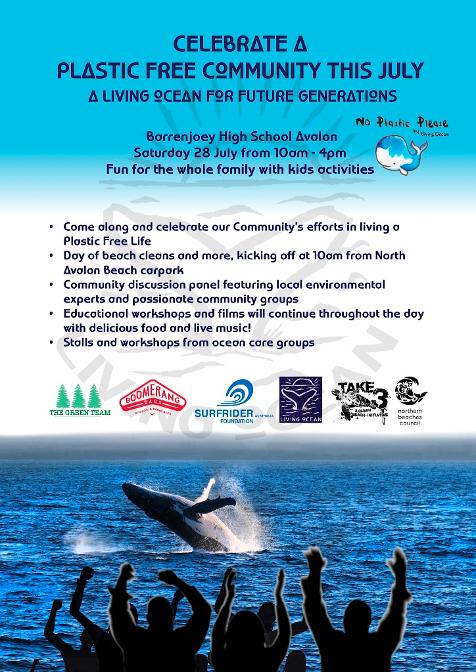
- policies that provide NOPSEMA’s interpretation of legislative provisions
- guidelines that provide NOPSEMA guidance on how to meet legislative requirements
- guidance notes that provide NOPSEMA’s expectations on an environmental management topic
- information papers that provide further information, background and practices to foster improved environmental management outcomes.

Pittwater Reserves
Annie Wyat Reserve - A W PictorialBarrenjoey Headland: Spring flowers Barrenjoey Headland after fire
NSW Government The First To Launch 'Build-To-Rent'
John B Fairfax Gives Young Rural Journalists A Voice
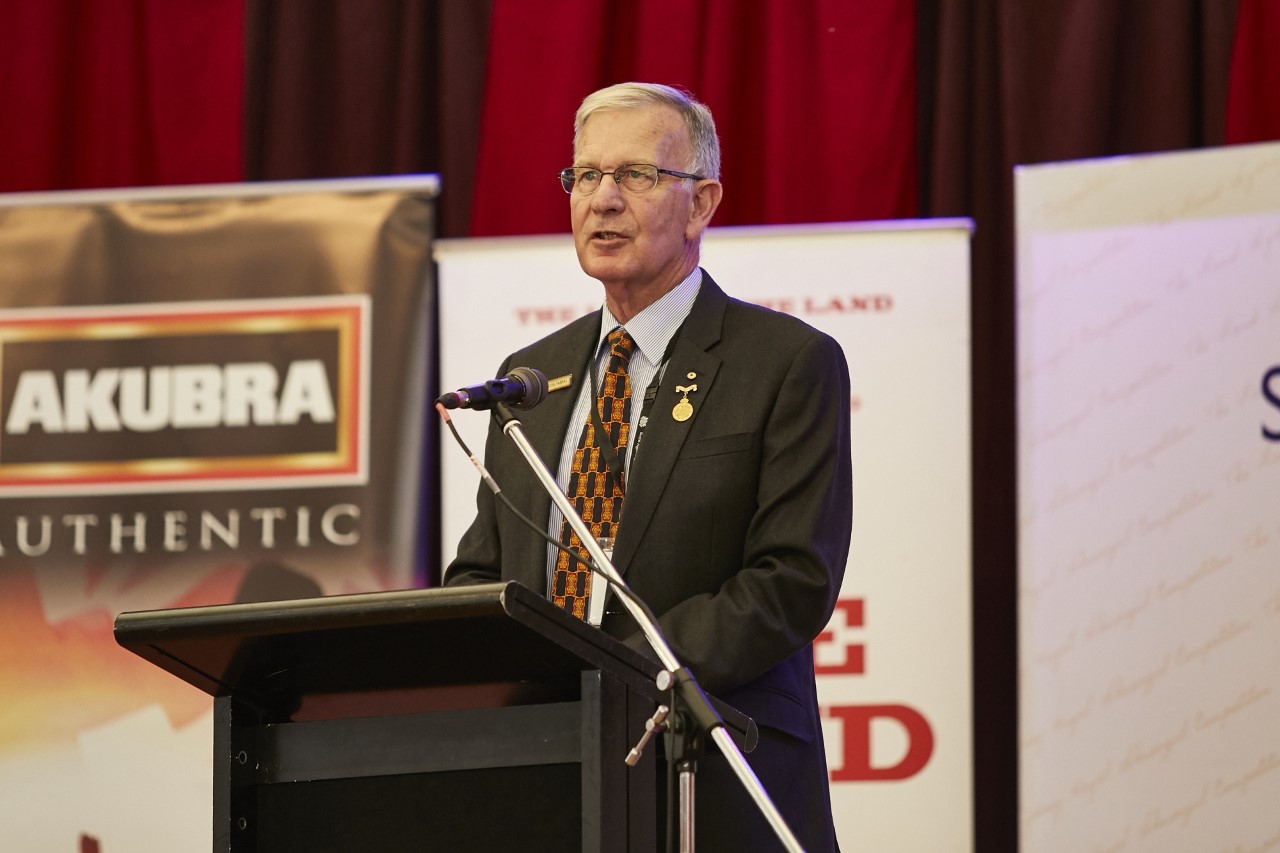
It's Official - Spending Time Outside Is Good For You
Department Recommends Approval For Ashton Coal Proposal
New Planning Codes To Provide More Housing Choice And Greener Streets
Additional Funding Keeps Australian Icon Flying High
Rising Sea Levels Could Cost The World $14 Trillion A Year By 2100
Disclaimer: These articles are not intended to provide medical advice, diagnosis or treatment. Views expressed here do not necessarily reflect those of Pittwater Online News or its staff.